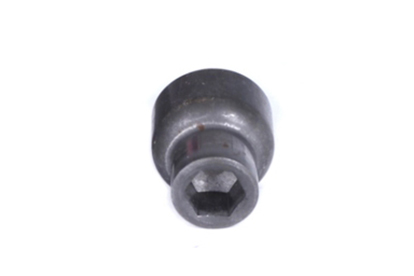The forging die of the die manufacturer is the abrasive sleeve for cold forging of products, which combines the die with equipment to produce products of specific specifications. What is the principle of forging die? How to design? What are the production steps? Now let's enter the mold world together with Chengda!
1、 Background of forging die:
Forging die manufacturers are the dies used in the forging process. The raw materials produce plastic deformation in the forging die under the action of external forces, so as to obtain the required shape and size of parts. Forging die can be divided into hot forging die, warm forging die and cold forging die according to different forging temperatures. Hot forging die can also be divided into hammer forging die, screw press forging die, mechanical press forging die, flat forging die and hydraulic press forging die due to different equipment. During die forging of the press, it is necessary to design and process the die base. During the forging process, it is also necessary to make the blank (such as roll forging, cross wedge rolling) die, trimming die, punching die, correction die, cold precision pressing die, etc. These dies and devices also belong to the category of forging dies.
2、 Origin of forging die:
Warm forging die: In front of us, we briefly introduced the origin and basic process of forging die. In order to understand and adjust the author's time, I will further elaborate today:
In 1840, the western countries produced large-scale military components, which could not be realized according to the then technological level. Therefore, through experiments, the products were heated by warm forging, thus forming a forging die with hot forging as the mainstream.
Cold forging die: cold forging is also called cold extrusion, which belongs to the category of forging process. It is mainly plastic forming of machinery, devices and materials without any chemical reaction under the constant temperature of materials. Cold forging die is also called cold extrusion die. Especially in the contemporary era, it has become a new production process for many manufacturers. More and more difficult products can be integrated into shape through the skillful production of molds. Especially after 1996, it has been praised by most enterprises in China.
Brief overview: Forging dies have been involved since the 1850s. With the continuous application of technology and materials, at the end of the 1990s, people are more scientific and technological to improve and apply die equipment.
3、 Structure of forging die:
The forging die is basically the same as the plastic die and hardware die commonly seen in the market. It is also composed of a mold base and a mold center. It is the same as the male mold and female mold of the plastic mold and the continuous mold combination of the hardware mold.
Combination: mold base, mold center, fixing device
4、 Comparison of advantages and disadvantages:
Advantages: save materials, save processing time and improve process;
Disadvantages: high technical difficulty and low processing frequency
5、 Development direction of forging die:
The main technical development direction of forging die is to improve the level of die design, adopt new die materials, and use high-precision processing means to achieve high-precision forging under the condition of high life of the die.
With the improvement of the overall level of China's manufacturing industry, China's forging die technology will reach the international advanced level, and some innovative and special technologies will reach a good level. In particular, contemporary cold forging dies are vigorously applied to ships, auto parts, lamps, communications and other fields, greatly saving material and labor costs, thus improving the product price ratio.
Due to the difference of process and materials, more die knowledge is welcome to pay attention to the introduction of forging dies in Rentong. We will add literature from time to time. Due to the time relationship, the unfinished parts are only for reference, thank you!
